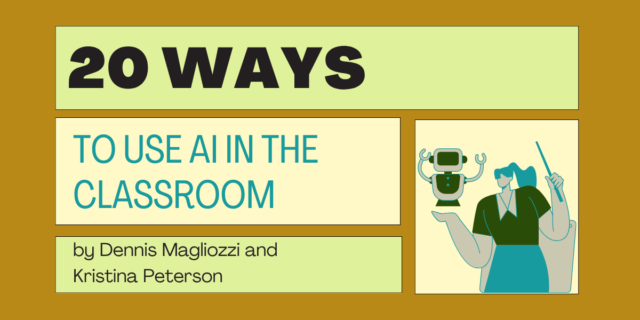
The content of this post has been lightly adapted from A Guide to the Writing Workshop, 3–5, a component of the Units of Study in Writing, 3–5 sets.
Writing workshop minilessons are meant as intervals for explicit, brief instruction in skills and strategies that then become part of a writer’s ongoing repertoire, to be drawn upon as needed. That is, every day in a writing workshop, you gather the learners and say, “I’ve been thinking about the work you are doing, and I want to give you just one tip, one technique that I think will help with challenges some of you are encountering, or will soon be encountering.” Then you demonstrate the new technique and help children get a bit of assisted practice trying it in miniature ways, all within a ten-minute minilesson. After this, you send learners off to continue their important work, reminding them that from that day forward, they can always draw on the strategy they learned that day, as well as those they’ve learned on previous days.
I’ve often said that the most important words of any workshop are the words that come at the end of the minilesson, when you say, “Off you go.” In any workshop, it is important that the kids know that after the minilesson is over, they can resume the important work they were doing the day before, drawing on all they have learned across the year and, especially, the recent days. Then, at the end of each day’s workshop, you’ll gather your writers once more, bringing that day’s work to a close with a brief time to share. The focus of the share often refers back to the focus of the minilesson, creating a sense of closure to the workshop.
9 Tips to Help You Teach Writing Minilessons
- Many teachers have a signal they use every time they want to gather students for a minilesson or a share. Perhaps a child is sent from table to table, like a young Paul Revere, saying “We’re meeting at (the time).” Perhaps a teacher gathers kids’ attention by saying, “Fourth-graders,” and then waits for children to look at her and be silent. In the quietness, that teacher might say, quietly, not in a playground voice, “Will you bring your devices and join me in the meeting area?”
- Many teachers find it efficient to ask children to always bring their devices or their notebooks and folders to every minilesson. If children sit on their materials, those materials stay out of the way of fiddling fingers, yet are accessible when needed. By fifth grade, you may want students to record notes as they participate in a minilesson, although this can also be a time-consuming distraction.
- The aura of a minilesson is more like a whole-class read-aloud than a lecture. Minilessons feel like intimate and urgent gatherings. “Listen up!” the teacher says, leaning forward in the chair, looking kids in the eyes. Minilessons are about as far from PowerPoint lectures as you can get.
- Movement, gestures, dramatization, use of kids’ names, visuals, and changes in intonation all keep kids engaged.
- Minilessons also include silent moments for kids to think or point or “write-in-the-air.” Leave time for kids to list across their fingers, to locate a place in their draft where they have done something, to imagine how they might write something. When you stop talking, they can start thinking.
- Turn-and-talk intervals are absolutely essential. Teach kids to make efficient switches from listening to you to talking with a partner and then back to listening to you. You will not be able to wait until each partnership has finished whatever they were saying, so teach kids that when you say, “Back to me,” they need to finish that one sentence and then stop talking. You may alter your ask so sometimes you say, “Turn and, Partner 1, write-in-the-air,” which means you are channeling one partner to dictate the words that person would write if there was time for writing. You might say, “Turn and list . . .” or “Turn and read aloud,” or “Turn and argue,” or give another prompt.
- When kids are talking to partners, you usually listen to those conversations—but sometimes you instead take a second to orient yourself for the next bit of teaching. After a minute, you sometimes say to the group, “I heard you say . . .” or “You’ve been saying . . . ,” in which case you might recap what you heard or what you wish you had heard.
- Because minilessons are so short, they aren’t occasions for reading or writing whole texts. Instead, you are apt to thread a text through many minilessons, so that on any one day, you zoom in only on the part of the text you are spotlighting.
- You rarely have students watch you write paragraphs of writing in a minilesson. If you need to produce more than a few lines of writing, you might rehearse aloud, then reveal that writing.
The completely updated Units of Study in Writing for Grades 3–5 provide an even more powerful curriculum for growing confident writers. With a classroom-tested and research-based trajectory to support skill development, discovery, and practice in the craft of writing, teachers and their students are both set up for success.
Comprehensive units provide clear structure, routines, goals, assessment, professional development, and grab-and-go resources. Diverse mentor texts and newly streamlined print and digital tools aligned to science of reading and writing principles enable educators to provide responsive teaching and support for all students' skill development as they grow their writing craft.
The Reading & Writing Project at Mossflower was created out of the pioneering work that Dr. Lucy Calkins began over forty years ago. Inspired by her research, she developed innovative curricula and methods that transformed the way children learned to write, adapting the collegiate and professional-level “writing workshop” model for elementary-age students. Today, RWP-M remains deeply rooted in this experience, where Dr. Calkins and her team of experienced educators author the Units of Study in Reading, Writing, and Phonics for grades K through 8, and several series of engaging decodable texts. More than authors of curriculum, at its core, the Project is a community of practice, a think tank, and a professional development organization dedicated to working with schools and educators to empower students to become what we have always known them to be: proficient and enthusiastic writers, readers, and thinkers.
***
Download our FREE "Teaching the Writing Process" eBook today to learn strategies for developing confident and independent writers.
Download our free "Teaching the Writing Process" eBook


